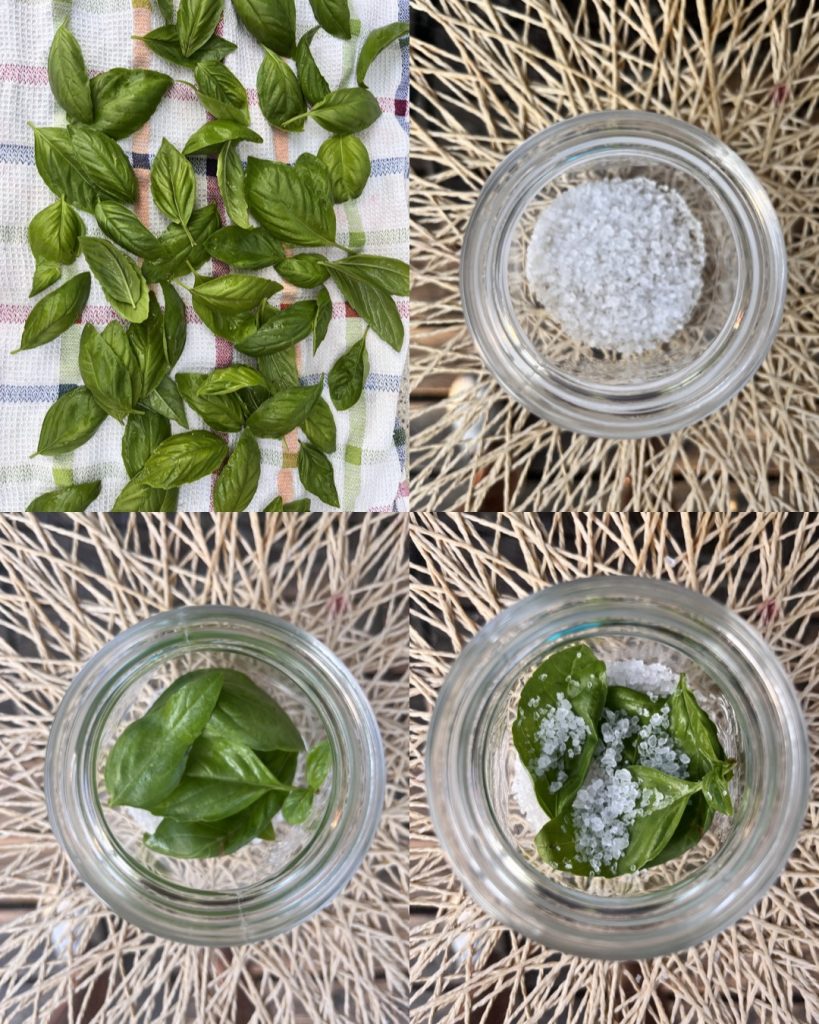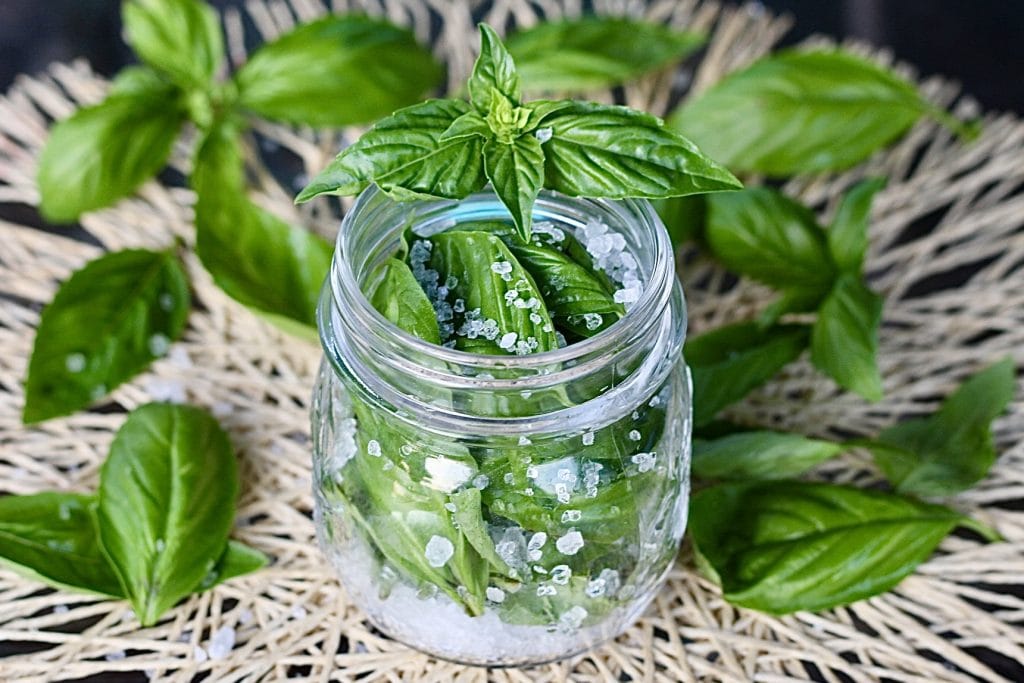Salted basil is a traditional technique for preserving basil leaves, convenient and always at hand.
This method allows you to maintain the intense aroma and flavor of fresh basil for long periods, even out of season, without resorting to refrigeration or freezing.
It’s an ancient and simple practice, but incredibly effective, that allows you to have this precious ingredient available all year round. This method not only preserves the basil but also its distinctive aroma, adding an authentic and genuine touch to Mediterranean dishes.
It can be used in a variety of dishes, just like fresh basil. Before use, the leaves can be rinsed to remove excess salt, or they can be added directly to dishes, keeping in mind the need to reduce the amount of added salt during cooking.
This technique is particularly appreciated in the preparation of sauces, like pesto, in soups, salads, and tomato-based dishes, where the aroma of basil is central. The flavor of salted basil tends to be more concentrated, so it is advisable to use it sparingly compared to fresh basil.
Compared to other preservation methods such as drying or freezing, salted basil maintains the aromatic profile of the fresh plant better.
I also recommend

- Difficulty: Very Easy
- Cost: Inexpensive
- Preparation time: 15 Minutes
- Cooking methods: No Cooking
- Cuisine: Italian
- Seasonality: Summer
Ingredients for Preparing Salted Basil for a 1-cup Jar
- 2.1 oz basil
- 3.5 oz coarse salt
Tools
- 1 Jar
- 1 Paper Towels
Steps for Preparing Salted Basil
Start by harvesting the basil when the plants are at their freshest in the summer. The leaves should be young, intact, and free of blemishes or signs of decay. It is important to pick the leaves early in the morning when the essential oil is most concentrated.
After harvesting, gently wash the leaves in cold water to remove any soil or insect residues. Then let them dry on a cloth in the air for a couple of hours. After that, remove any water residues using a clean cloth or kitchen paper, without pressing and with great care to avoid darkening the leaves.
Pour a thin layer of coarse salt on the bottom of the jar, covering the entire base. Place a first layer of basil leaves on top of the salt, trying not to overlap them excessively. Press the leaves lightly, but not too hard to avoid damaging them. Cover the basil with another layer of coarse salt. Continue alternating layers of basil and salt until the jar is full.
Coarse salt is preferred because it helps extract moisture from the leaves without dissolving immediately, thus creating an inhospitable environment for mold and bacteria growth. Salt acts as a natural preservative, thanks to its hygroscopic and antibacterial properties.
Once the jar is filled, press the leaves lightly to compact the layers and add a final layer of salt on the surface to cover it completely.
Seal the container tightly and store it in a cool, dry place, away from direct light.
Over time, the salted basil develops a more intense aroma and a slightly saltier taste, while still maintaining its characteristic essence.
Tips and Storage
Use sterilized jars; here you can find how to sterilize them and make sure they are completely dry. A damp jar could compromise the preservation of the basil.
Let the jar sit for at least 1-2 weeks before starting to use the basil, so the leaves are well-flavored and properly preserved.
Once opened, store in the refrigerator.
Basil prepared this way can last up to 6 months if stored correctly. Periodically check the jar to ensure there is no moisture and that the salt has not dissolved excessively.
If you like my recipe RATE IT BY CLICKING MANY STARS and SHARE it on your social networks and FOLLOW me on
INSTAGRAM and on
To stay updated on my new recipes you can activate push notifications from my blog



